41 what is the proper method for transporting food off site service
ServSafe Unit 7 | Other - Quizizz Which procedure must be followed when transporting food for off-site service? answer choices pack food in insulated food-grade containers clean the inside of the delivery vehicle annually store raw meat, poultry and seafood and ready to items together assume the service site has safe water and garbage containers Question 3 120 seconds Food safety for food delivery | Food Standards Agency Food that needs refrigerating must be kept cool while being transported. This may need to be packed in an insulated box with a coolant gel or in a cool bag. Equally, food that needs to be kept hot...
9.3 Warehousing and Transportation - Principles of Marketing Pipelines. Pipelines are generally used to transport oil, natural gas, and chemicals. Two-thirds of petroleum products are transported by pipeline, including heating oil, diesel, jet fuel, and kerosene. Pipelines are costly to build, but once they are constructed, they can transport products cheaply.
What is the proper method for transporting food off site service
Handling Food Safely While Eating Outdoors | FDA Use an appliance thermometer to be sure the temperature is consistently 40° F or below and the freezer temperature is 0° F or below. Refrigerate or freeze meat, poultry, eggs, seafood, and other... Providing Safe Food - ServSafe Label food with a use-by date and time, and reheating and service instructions. 7-20. Off-Site Service. Instructor Notes. Delays from the point of preparation to the point of service increase the risk that food will be exposed to contamination or time-temperature abuse. At the service site, use appropriate containers or equipment to hold food ... Leftovers and Food Safety | Food Safety and Inspection Service Keep Food out of the Danger Zone Bacteria grow rapidly between the temperatures of 40° F and 140° F. After food is safely cooked, hot food must be kept hot at 140° F or warmer to prevent bacterial growth. Within 2 hours of cooking food or after it is removed from an appliance keeping it warm, leftovers must be refrigerated.
What is the proper method for transporting food off site service. What are the correct procedures for preparing and serving food for off ... What is the proper method for transporting food for off site service ? When transporting food off-site: Use insulated, food-grade containers designed to keep food from mixing, leaking, and spilling. Label food with a use-by date and time, and reheating and service instructions. Clean the inside of delivery vehicles regularly. .What practices should be followed to serve catered food off-site ... When transporting food off-site: Use insulated, food-grade containers designed to keep food from mixing, leaking, and spilling. Label food with a use-by date and time, and reheating and service instructions. Clean the inside of delivery vehicles regularly. Regarding This, Which is a potential source of contamination when serving off site? How to Dispose of Contaminated or Spoiled Food | FDA For further information about disposing of contaminated, spoiled food as well as reconditioning, contact the Office of Compliance, Center for Food Safety and Applied Nutrition (240) 402-2359 or... Packaging, Labeling, Transporting, Storing — Food Law Indirect food additives (e.g., packaging) may be only used under conditions of good manufacturing practice; that is, the quantity 1) does not exceed the amount reasonably required to accomplish the intended effect in the food, 2) shall not exceed any prescribed limitations, 3) shall not be intended to accomplish any physical or technical effect in the food except as permitted by regulation, and 4) the article that contacts food shall be of a purity suitable for its intended use.
Food Service Guidelines | Nutrition | CDC Food service guidelines are standards for healthier food and beverages and food service operations in worksite and community settings. Food service guidelines may: Contribute to health and wellness of employees. Change the social norms to create expectations for healthier food and beverage availability. Strengthen local food systems. › Lift-a-Heavy-Object-SafelyHow to Lift a Heavy Object Safely: 13 Steps (with Pictures) Sep 15, 2021 · Strap the object into place on the dolly so it doesn’t fall off. Tip the dolly backward toward you to lift the object. Roll the object to the area you want to set it down and pull the bottom out. [10] chowhound.comChowhound Thank you for making Chowhound a vibrant and passionate community of food trailblazers for 25 years. We wish you all the best on your future culinary endeavors. Serve Safe Study Guide Flashcards | Chegg.com washing hands. In a temporary kitchen area where service items such as plates, knives, forks, and spoons cannot be washed and sanitized properly, it is best to. Use single-use service items. food contact surfaces must be. non absorbant. bacteria that causes food-borne intoxication. produce poisonous substances.
Chapter 7 Flow of Food.docx - Chapter 7 Flow of Food: Service 1. What ... Answer: Below are some of the measures that can be taken to minimize contamination in self-service areas.- Use sneeze guards, display cases, or packaging to protect food on display from contamination.- Mark food in self-service areas with a label.- In self-service areas, do not allow customers to fill up dirty plates or use dirty utensils.- Stock food displays with ... Transport, Handle, and Store Food Properly - Safe and Healthy Food ... Prepared meals that are delivered hot to the food pantry, or that you are transporting, must be kept hot, 140°F or higher, or cold to 40°F. Harmful bacteria will not grow as long foods are kept either too hot or too cold. Help keep hot foods hot by placing them in a warming tray on a serving line. What is the proper method for transporting food for off site service ... Food transportation can be defined as the process of delivery food from one place to another. The best and proper method that can use to transport food for off site service is to make use to make use of insulated food grade containers so as to prevent food from the following: Leakage; Mixing etc; Therefore pack food in insulated food-grade containers. Preventing Cross-Contamination - ServSafe be done when transporting food for off-site service. • If separate storage is not possible, store food in the following top to bottom order: ready-to-eat food; seafood; whole cuts of beef and pork; ground meat and ground fish; whole and ground poultry. • This order is based on the minimum internal cooking temperature of each food.
› handwashing › when-how-handwashingWhen and How to Wash Your Hands | Handwashing | CDC Wet your hands with clean, running water (warm or cold), turn off the tap, and apply soap. Lather your hands by rubbing them together with the soap. Lather the backs of your hands, between your fingers, and under your nails. Scrub your hands for at least 20 seconds. Need a timer? Hum the “Happy Birthday” song from beginning to end twice.
PDF Food Transportation Safety: Characterizing Risks and Controls by Use of ... food transportation and storage practices. MATERIALS AND METHODS The study objectives required gath-ering current data not known or avail-able. Moreover, they did not easily lend themselves to more precise analytical techniques, such as a statistical industry survey, given that it would entail asking food transporters to release potentially
Food Delivery Safety | CDC Milk, meat, cut fruit, and other perishable foods delivered from a local store or farm also need to stay at a safe temperature. Hot food should arrive hot, and cold food should arrive cold. Food should not be kept at room temperature for more than 2 hours, or 1 hour if the outside temperature is 90°F or warmer.
Transporting Food Safely and Efficiently - Food Processing The safest option? Always fill up before hauling. Have your drivers use the same temperature-monitoring systems when transporting foods to ensure a consistent environment throughout the drive, and have them perform periodic temperature checks en route. Make sure your drivers are familiar with the equipment and understand its limitations.
Drop-off or Full-service Catering What's Right for Your Restaurant? It can be a big undertaking so it's important to assess everything it would take to duplicate your full restaurant experience off-site. On the plus side, white-glove service would let you charge a premium. To get a full-service catering operation off the ground, you'll need to invest significant time and money up front.
servsafe Flashcards | Quizlet Saliva can be transferred to a food handler's hands. When a food recall occurs, the operation must discontinue use of the food item. an individual who is infected with pathogens but shows no signs of illness is called a (n). carrier Garbage containers used by an operation should be Leak proof waterproof and easy to clean
Delivery 101: Inspection Tips for Food Safety Temperature: Always make sure the food being received is holding at the proper temperature. If it's supposed to be cold, verify it's at 41 degrees Fahrenheit. If the food being delivered isn't at the right temperature, don't accept it. There is no way of knowing how long it was sitting in the danger zone.
› medical-wasteMedical Waste Disposal – Definitive Guide 2021 [Infographic] Jun 10, 2020 · The on-site treatment usually requires expensive equipment. Not all facilities have this due to major infrastructure expenditure, but it is generally cost effective for very large hospitals and laboratories. Thus most medical waste producers choose off-site treatment known as regulated medical waste disposal companies because these companies have:
en.wikipedia.org › wiki › MiningMining - Wikipedia Mining is the extraction of valuable minerals or other geological materials from the Earth, usually from an ore body, lode, vein, seam, reef, or placer deposit.The exploitation of these deposits for raw material is based on the economic viability of investing in the equipment, labor, and energy required to extract, refine and transport the materials found at the mine to manufacturers who can ...
Transporting food - Food Standards You can achieve this by using containers with lids or by applying plastic film over containers. Materials used to cover food should be suitable for food contact, to ensure that they do not contain any chemicals that could leach into the food. Aluminium foil, plastic film and clean paper may be used, and food should be completely covered.
Page 5 - ServSafe Manager Study Guide for the ServSafe - Union Test Prep Off-Site Food Service Food for catered events should be transported in insulated, food-grade containers that are leakproof. Use containers that can be held at appropriate temperatures. Label them with use-by date and time, and reheating and serving instructions. Internal temperatures should be taken.
What are the correct procedures for preparing and serving food for off ... When delivering food off-site:Use insulated, food-grade containers designed to stop food from mixing, leaking, or spilling.Clean the inside of delivery vehicles regularly.Check internal food temperatures.Label food with a use-by date and time, and reheating and service instructions.
Servsafe Flashcards | Quizlet Containers for transporting food for off-site service must be food-grade, leakproof, and Insulated Food for off-site service should be labeled with a use-by date and time and Reheating and service instructions Cold TCS food being held for off-site service must be at what temperature? 41F (5C) or below
PDF Transportation of Fresh Produce - LSU vehicles used to transport fresh produce. • All transportation vehicles must be pest-free. • All fresh produce transportation vehicles must be washed with water at 140-160 F and sanitized with a food-grade sanitizer prior to loading and transporting produce. Transportation of Fresh Produce: Best Practices To Ensure On-farm Food Safety
Receiving Practices - Food Safety, Sanitation, and Personal Hygiene 5. Receiving Practices. HACCP is an operation system that ensures that as many precautions as possible are undertaken to eliminate, minimize, or prevent any kind of contamination. HACCP identifies critical control points that relate to all transportation, handling, preparation, service, and storage of food products.
PDF Transporting Food to Remote Sites (Satellite Kitchens) : Hot Holding, Cold Holding, Reheating, Cooling, Transporting Food INSTRUCTIONS 1. Train foodservice employees on using the procedures in this SOP. 2. Follow California Retail Food Code requirements. 3. Keep frozen foods frozen during transportation. 4.
› sites › defaultFSIS FORM 5420-5 General Food Defense Plan - Food Safety and ... Food Defense Plan Security Measures for Food Defense This plan was developed through a joint effort between RTI International, the HACCP Consulting Group, a Focus Group of industry representatives, and the U.S. Department of Agriculture's Food Safety and Inspection Service.
› current › title-7eCFR :: 7 CFR Part 225 -- Summer Food Service Program (iii) The sponsor shall provide to the food service management company a list of State agency approved food service sites, along with the approved level for the number of meals which may be claimed for reimbursement for each site, established under § 225.6(d)(2), and shall notify the food service management company of all sites which have been ...
Leftovers and Food Safety | Food Safety and Inspection Service Keep Food out of the Danger Zone Bacteria grow rapidly between the temperatures of 40° F and 140° F. After food is safely cooked, hot food must be kept hot at 140° F or warmer to prevent bacterial growth. Within 2 hours of cooking food or after it is removed from an appliance keeping it warm, leftovers must be refrigerated.
Providing Safe Food - ServSafe Label food with a use-by date and time, and reheating and service instructions. 7-20. Off-Site Service. Instructor Notes. Delays from the point of preparation to the point of service increase the risk that food will be exposed to contamination or time-temperature abuse. At the service site, use appropriate containers or equipment to hold food ...
Handling Food Safely While Eating Outdoors | FDA Use an appliance thermometer to be sure the temperature is consistently 40° F or below and the freezer temperature is 0° F or below. Refrigerate or freeze meat, poultry, eggs, seafood, and other...



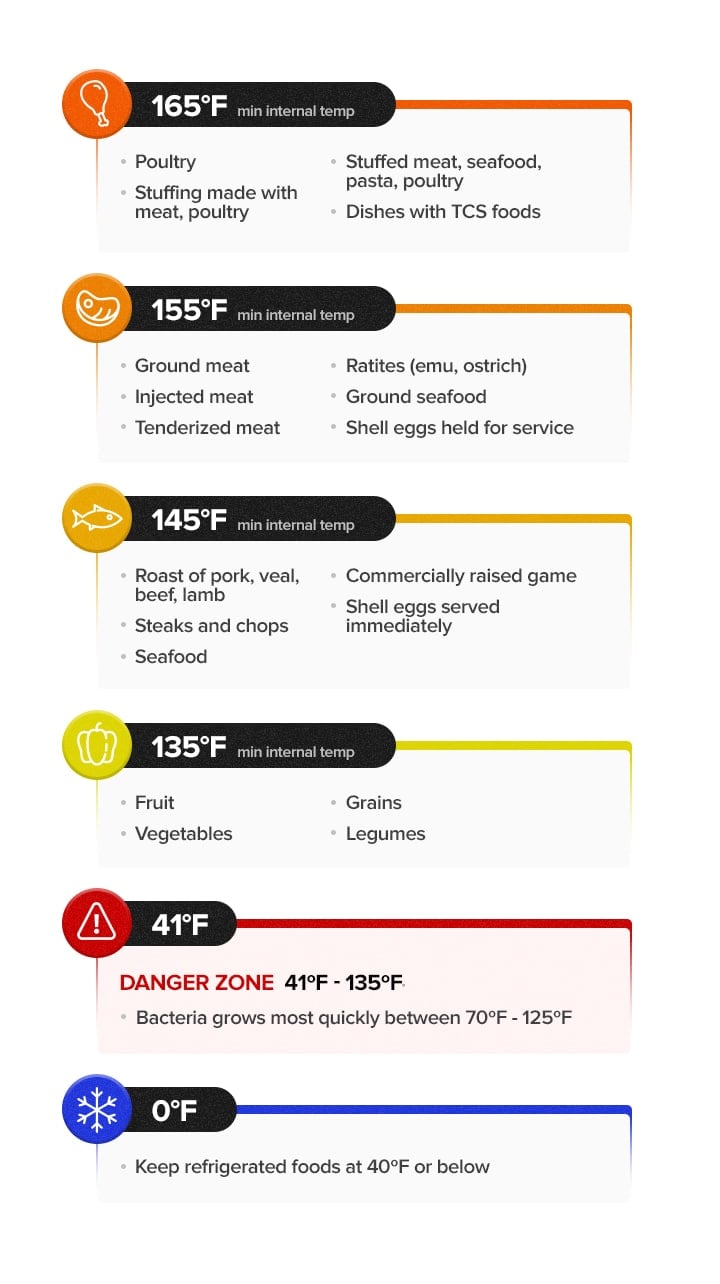
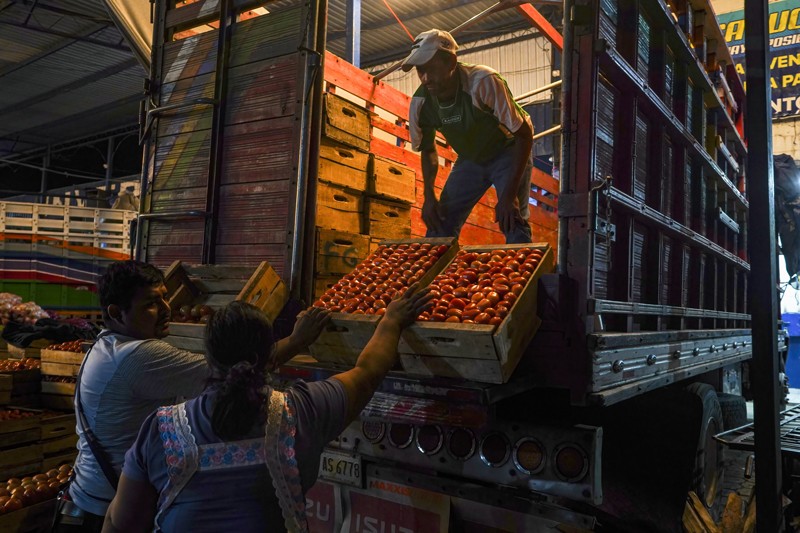
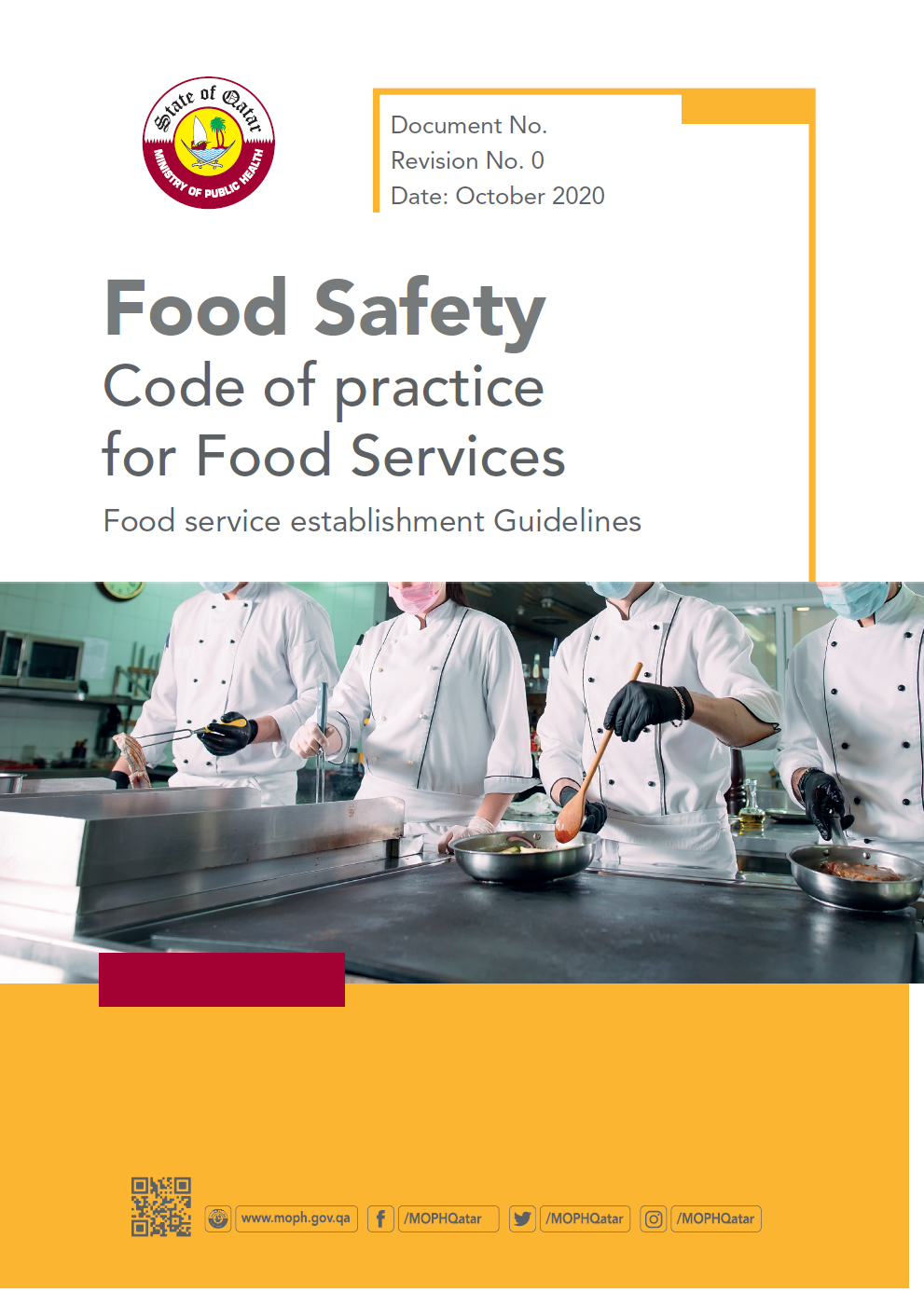


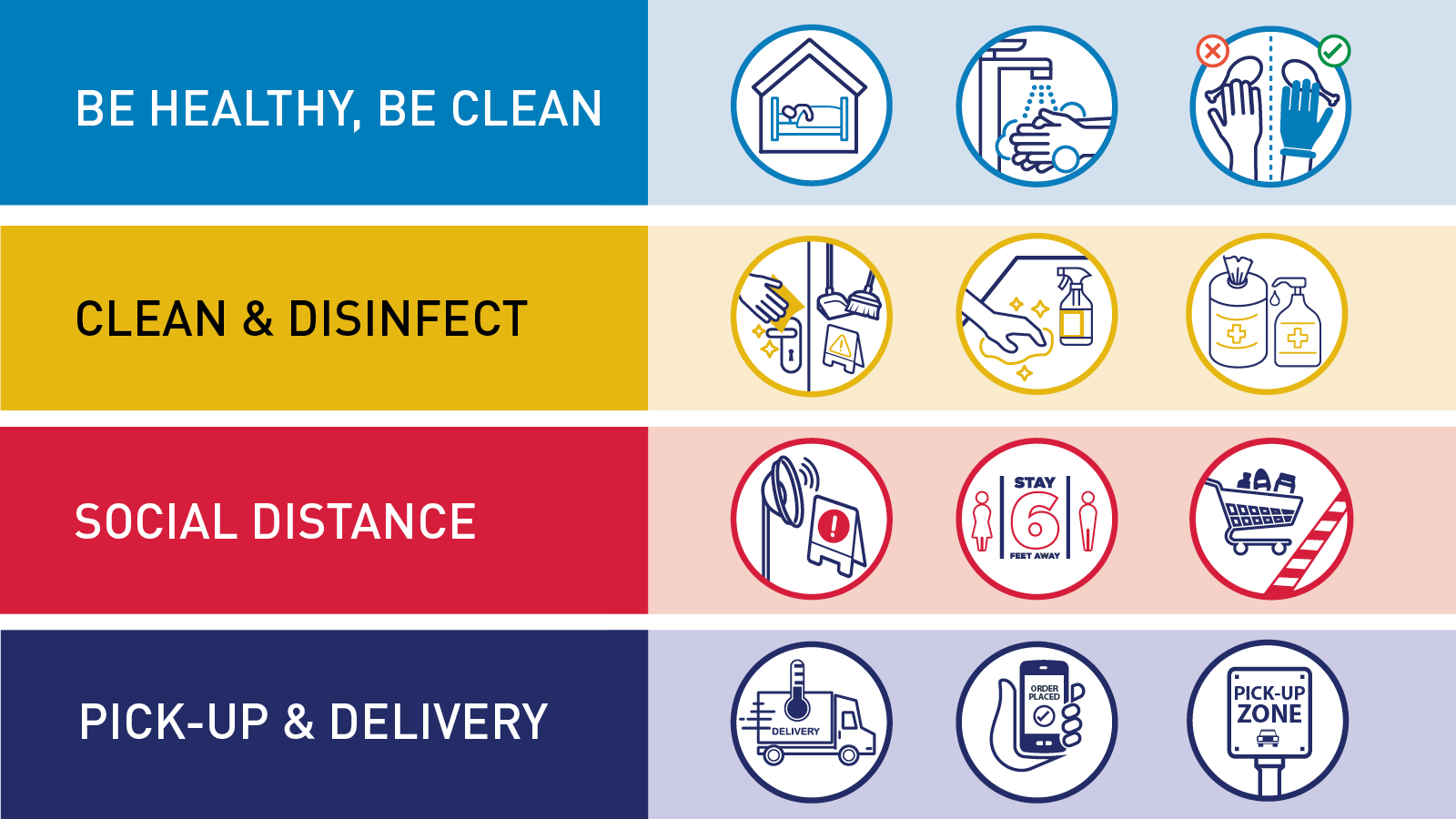

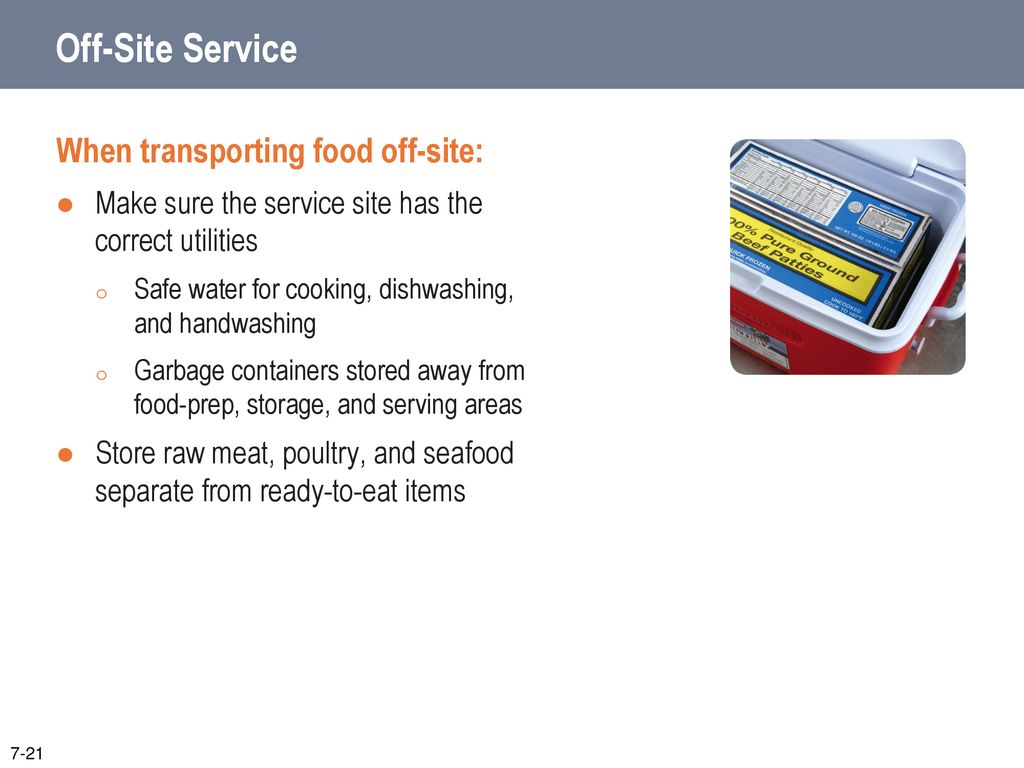

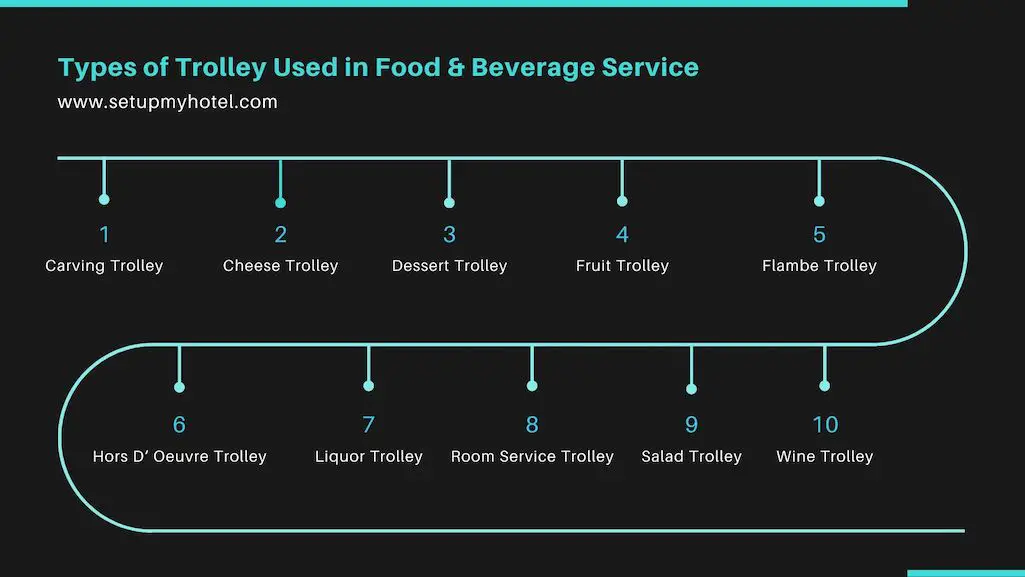
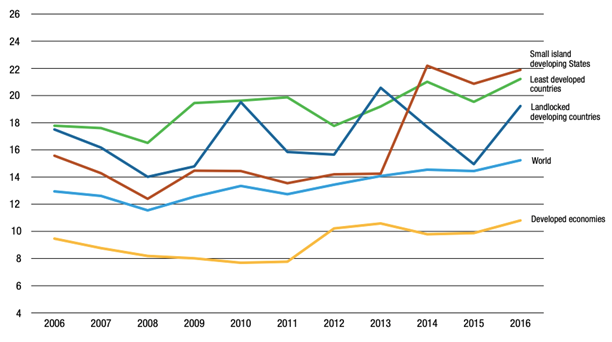
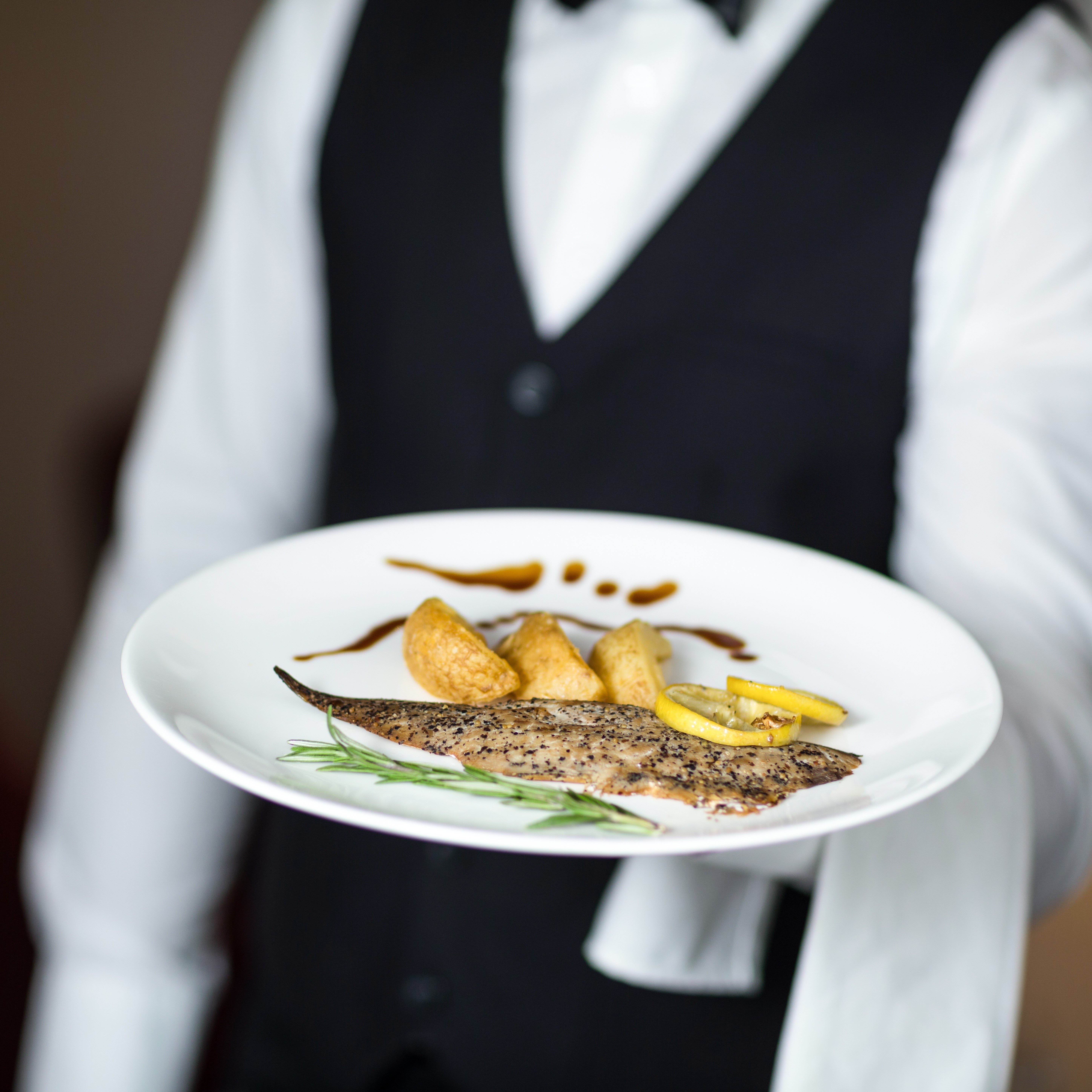
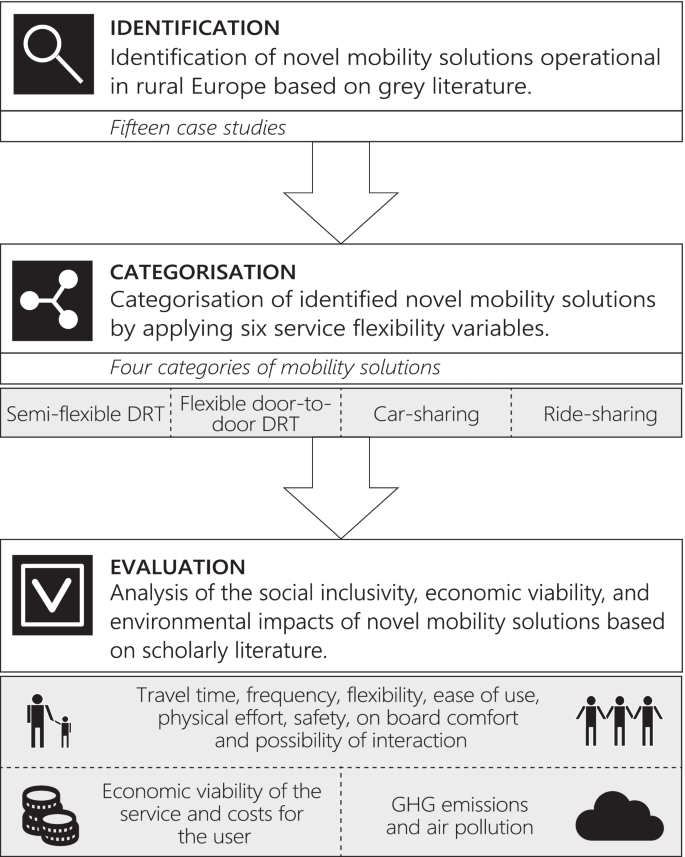


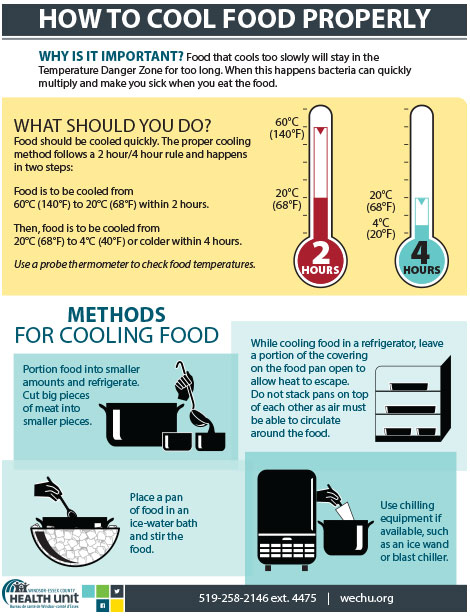


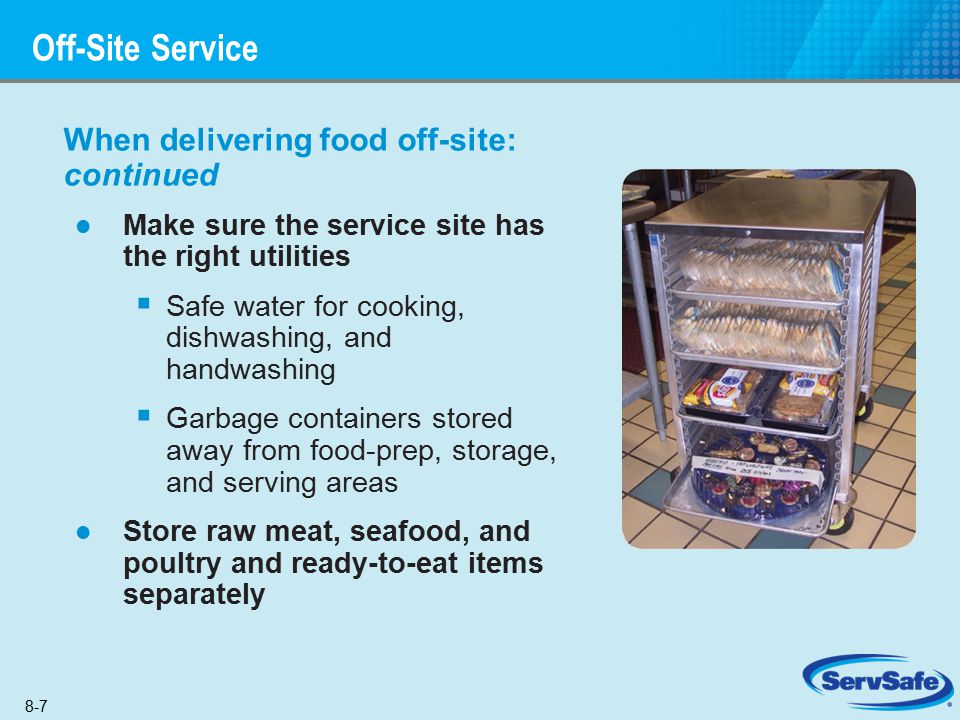


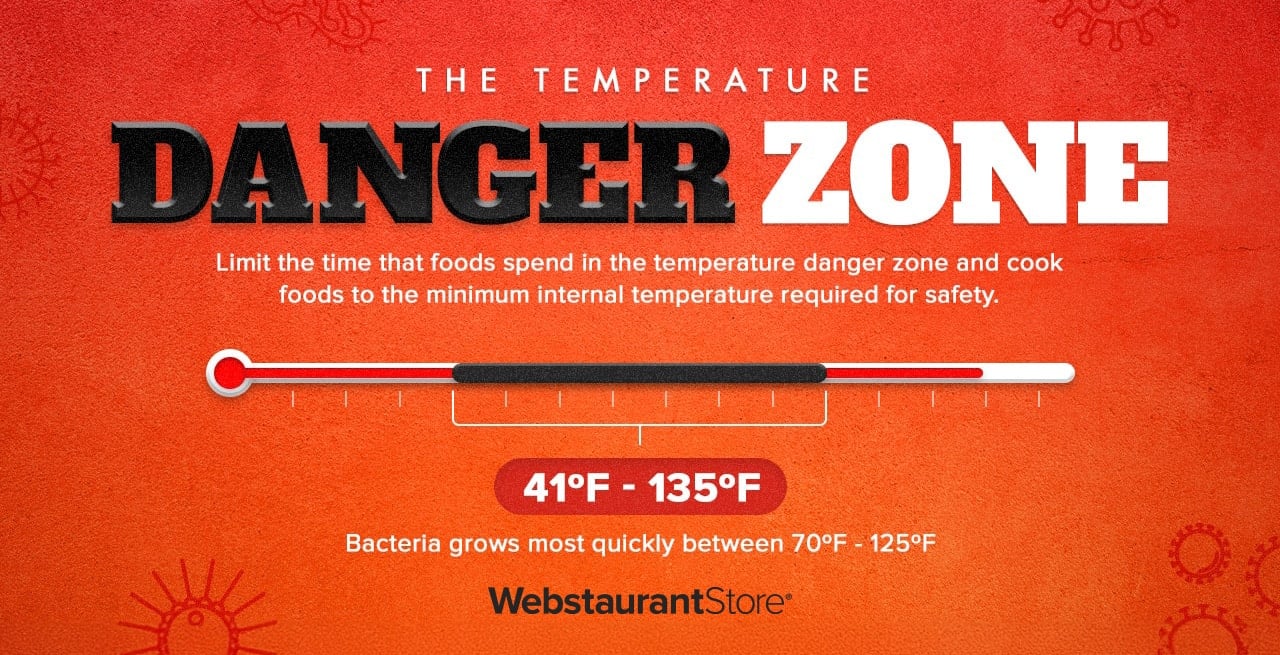
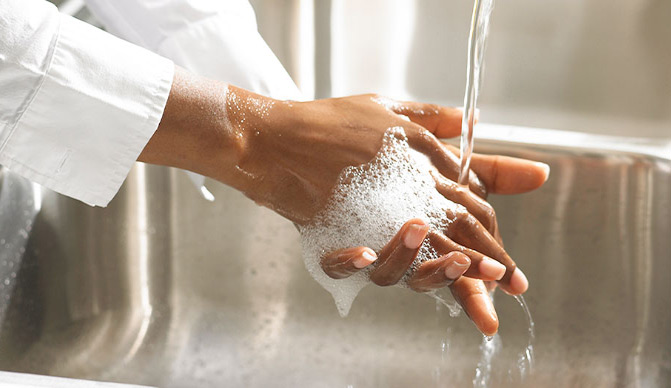

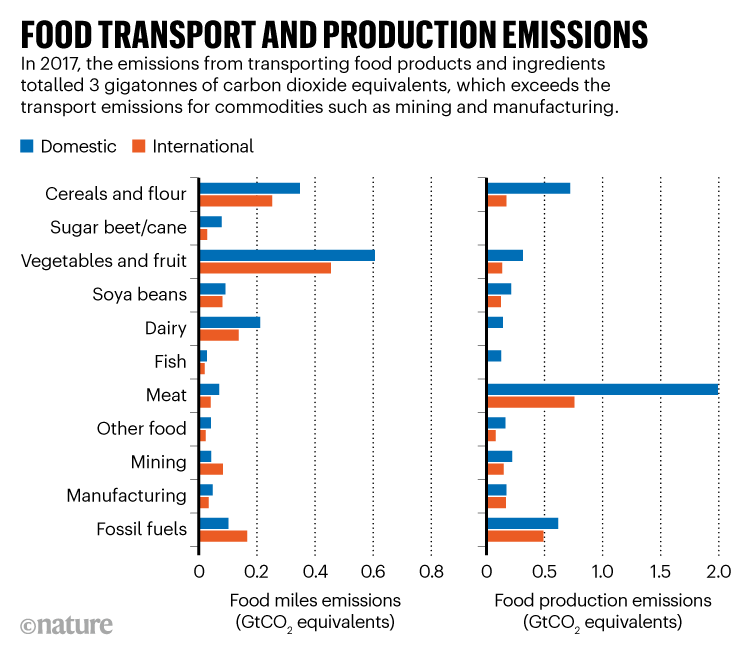
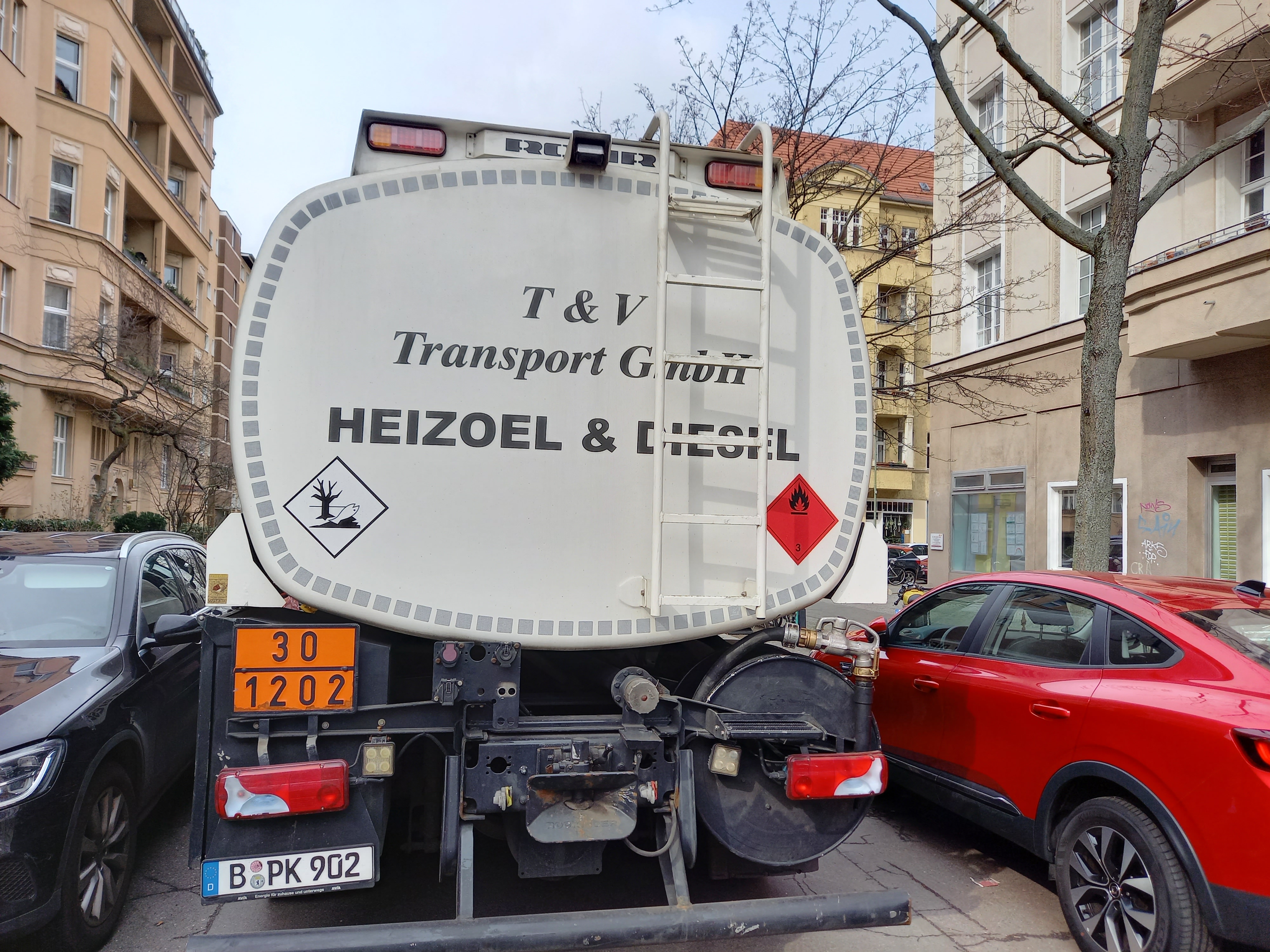



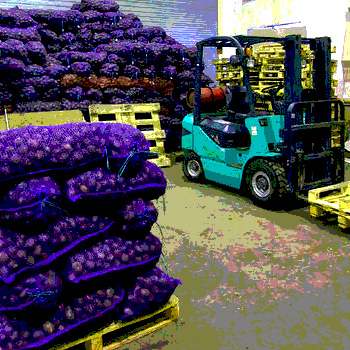
Post a Comment for "41 what is the proper method for transporting food off site service"